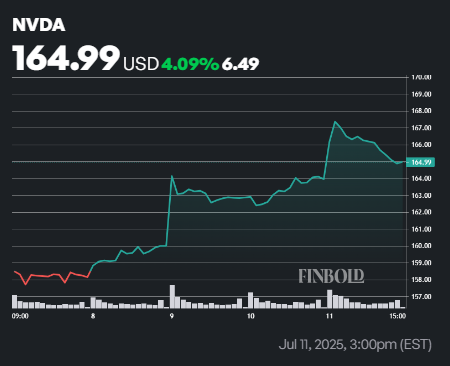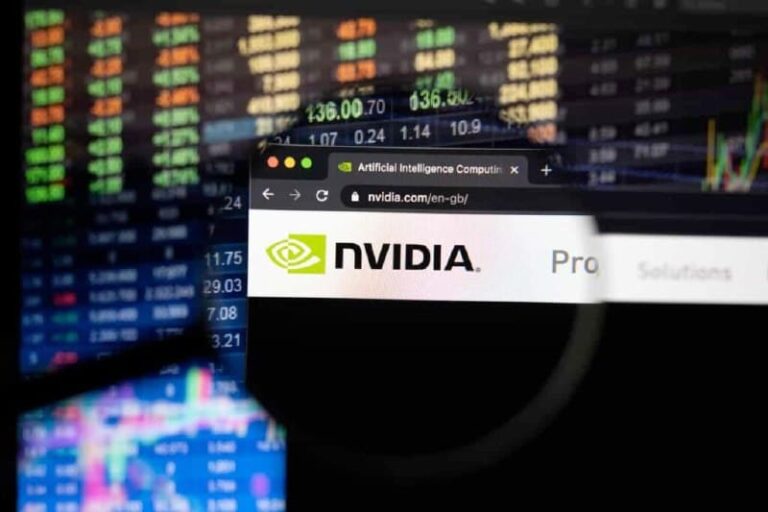The ongoing bullish run by semiconductor giant Nvidia (NASDAQ: NVDA) could extend to a record high of $300 in the coming months, according to an artificial intelligence (AI) model.
Notably, Nvidia has made history as the world’s first company to reach a $4 trillion market capitalization. At press time, NVDA shares were trading at $164.92, up 0.5%.

When will Nvidia reach $300
To estimate when the stock might hit $300, Finbold consulted OpenAI’s ChatGPT. The model predicts that Nvidia will reach that level between 2026 and 2027.
However, under favorable conditions, such as another strong AI-driven rally, it could happen as soon as late 2025. Conversely, if growth slows or risks emerge, the target might be pushed to between 2028 and 2030.
Moreover, ChatGPT’s forecast for Nvidia’s path to $300 depends on its ability to sustain strong revenue growth and protect profitability amid rising competition. In the first quarter of 2025, the company’s revenue surged to $44.1 billion, beating Wall Street’s expectations of $43.28 billion.
The model noted that Demand for its AI GPUs will be crucial. In a bullish scenario, ChatGPT noted that the chipmaker’s annual revenue could exceed $260 billion by 2027 and 2028. On the other hand, if rivals catch up or the market becomes oversupplied, the $300 target may be delayed.
Nvidia’s competition
Maintaining high gross margins is also essential to Nvidia’s premium valuation, which is supported by its advanced GPUs, such as Hopper and Blackwell. To this end, competition from entities such as Advanced Micro Devices (NASDAQ: AMD) and custom chips developed by cloud providers could pressure margins and reduce investor confidence.
Additionally, macroeconomic factors will influence the timeline. In this line, higher interest rates weigh on growth stocks by lowering the present value of future earnings, while rate cuts or a stronger economy could boost Nvidia’s climb.
Finally, investor sentiment around the AI cycle remains crucial, according to the AI model. To reach $300, Nvidia will need to deliver real-world, large-scale monetization; fading hype or market oversupply could dampen interest.
Featured image via Shutterstock







